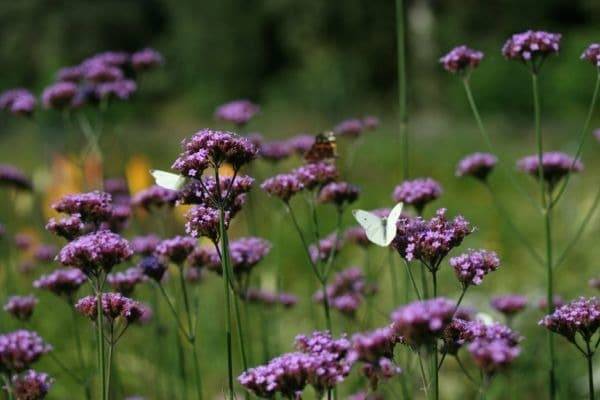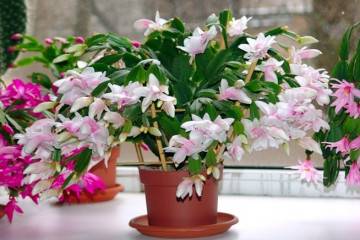Verbena of Buenos Aires (Bonar)
Content:
Verbena of Buenos Aires is a flower that is native to South America. Grows in sunny, open areas. In warm temperate climates, it is a perennial. In countries with cold winters, it must be cultivated as an annual.
Botanical description of the flower
High spectacular Buenos Aires verbena most often has inflorescences of purple or lilac umbrellas, the diameter of which is up to 5 cm. Their weak pleasant aroma attracts many butterflies, bumblebees, and bees.
It is a semi-shrub with a branched lignified central stem. Its height can reach one and a half meters. It grows into a large bush, begins to bloom in early July, and until late autumn pleases the owners with inflorescences that look like graceful bright balls.
This species is especially unpretentious. The plant is not afraid of frosts, heavy rains, mild drought. Loves the sunny side of the site.
On tetrahedral elastic high stems, oppositely sparse dense leaves are located. They have an oblong shape. Funnel-shaped flowers are collected in a complex umbrella.
First, a central stem is formed in the verbena. Then appendages appear on it. Long shoots are thin, firm, covered with many inflorescences.
Other types of verbena:
- besides Bonar, flower growers often grow Canadian verbena with bright red and pink flowers. It has a small stem, no more than 20 cm;
- the home species can grow in a pot. It reaches a height of up to half a meter. Blooms in blue, pink, red flowers with a white center;
- spear-shaped verbena feels good on the shore of a reservoir, where the soil is highly moistened;
- hybrid verbena has flowers of purple, purple, snow-white color.
The use of Bonar verbena in landscape design
A single instance of a flower makes a modest impression. It is advisable to plant them in small groups of at least 10. It is also better to combine them with brighter plants in the flowerbed.
On the site, Bonar verbena goes well with echinacea, ornamental cereals. They use it to decorate alpine slides, borders.
Variety Lilac rain is especially loved by flower growers. The plant will revive and decorate any landscape design. A sunny meadow, planted with verbena bushes, will perfectly harmonize with the surrounding trees and delight the owners with bright purple flowering until the deepest autumn.
Verbena Bonar: growing by seedlings
The flower is most often obtained from seeds. It is convenient to grow individual seedlings in a greenhouse or in a room, which can then be transferred to a flower bed.
The Bonar verbena plant is unpretentious, growing a flower will not be too difficult even for amateurs.
Before planting, the selected seeds are soaked in warm water for 1-3 days. Can be put in a growth stimulant solution for several hours.It is better to plant in March - April. Daylight hours at this time are longer. Plants can be placed on the balcony. They will not stretch in height. You will get a strong, good seedling.
Verbena Bonar prefers planting in light, fertile soil. It doesn't hurt to add sand to it. In order not to thicken the sprouts, small seeds are evenly distributed over the soil surface, lightly sprinkled with earth.
Cover the container with plastic wrap or glass. They are placed in a warm, bright place and make sure that the top layer is always slightly damp. The temperature in the room is maintained at least 18-20 ° C.
The sprouts will appear in 2-3 weeks. After a month, they are seated in separate pots. Two weeks will pass, and the vervain needs to be fed, and then pinch the top to branch out the bush.
Before planting on a flower bed, the seedlings are hardened for several weeks: they are taken out into the street or balcony during the day, and returned to the room at night. If the frosts have already passed and warmth is expected, they are planted in the ground at a distance of 25-30 cm from each other.
Verbena can also be grown from cuttings. From an adult bush, the tops of the branches are cut, the lower leaves are removed and the cuttings are placed in a container, covered with a mixture of sand and peat, and watered. Cover the greenhouse with foil. Within a month, the sprout will form a root system. You can plant it in the ground. By the end of summer, it will definitely bloom.
If the winter is not too harsh, verbena will multiply by self-seeding in the spring. The resulting plants will be sturdy. They will bloom a little later than those planted by seedlings. It will not be in July, but most likely in August.
Care
This type of verbena is named after the city of Buenos Aires. In the Argentinean climate, this plant is perennial. It prefers the sun, moderately moist soil. Able to survive extreme heat, drought, low temperatures.
The flower is unpretentious, does not require complex care, but some rules should be followed:
- you need to grow it in a spacious sunny place;
- seedlings need to be watered frequently. In the first month, this should be done every day. At the same time, excess moisture can destroy small sprouts. Sometimes at the landing site under the top layer of soil, drainage is arranged for them;
- as a top dressing, complex fertilizers are applied for flowering plants. Humus will not work, its excess can lead to the growth of the bush, the rare formation of umbrellas;
- in the first weeks after planting, the soil around the seedling must be loosened regularly. If the bushes are already large, you can mulch the ground;
- for a beautiful flowering, you will need to cut off wilted buds;
- the plant is rarely affected by disease. From aphids, it is treated with insecticides. Powdery mildew or fungal diseases are treated with foundationazole, preparations that include sulfur.



















